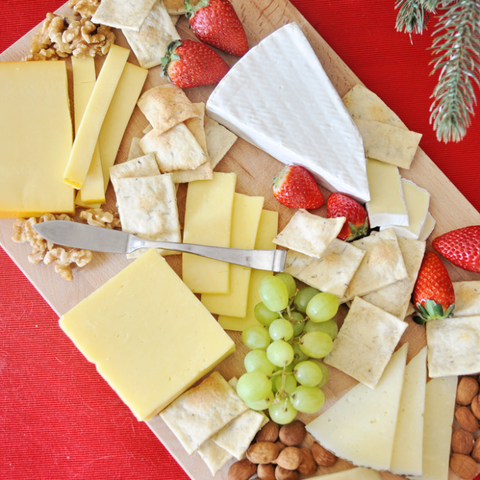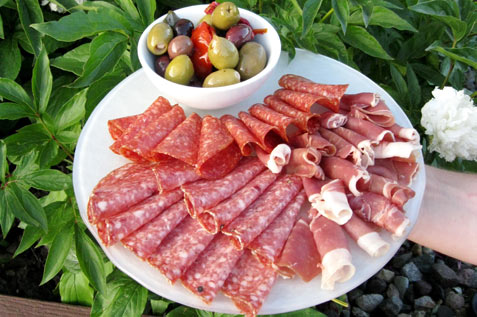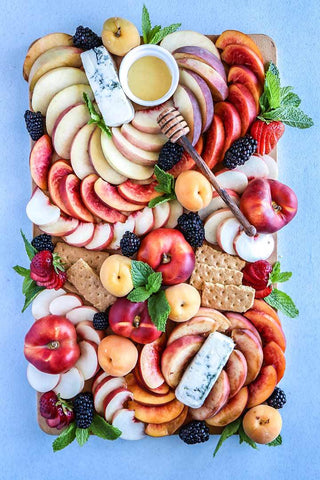Your Cart is Empty
Free Shipping and Returns on ALL U.S. orders!
The grazing platter is one of the easiest (and the prettiest) things a host or hostess can prepare. However, the combinations are endless so the novice tends to get lost and intimidated when putting together one for the first time.
The ultimate rule is to have fun with flavors and colors. To help the struggling host or hostess, here’s a brief rundown of the usual elements of the perfect grazing platter.
Select Your Snacks
Cheeses are broken down into three general categories according to their texture: soft, semi-firm, and hard. Cheese connoisseurs would teach more specific classifications but these three are fool-proof for cheese novices.

Photo via Spain on a Fork
The prettiest platters have wheels of brie and Camembert, and it’s not hard to see why. These soft cheeses are platter staples, and you can serve them as they are or baked with herbs and nuts. Meanwhile, Gruyere and Emmental are popular semi-firm choices because of their creaminess. Say hello to cheddar and Parmesan as you move towards the medium-hard category. These two don’t just belong in your pasta!
For the deli meats, consider Prosciutto is the unofficial queen of all deli meats, thanks to its versatility. They also come in different types, with the most popular one being prosciutto di Parma. Capocollo or capicola is its spicier sister.

Photo via Lunds & Byerlys
Mortadella’s taste is certainly more subdued and will frame the flavors of stronger cheese. People confuse it with bologna, but mortadella finishes far smoother than the latter. Salami is usually present in the grazing platter so we encourage you to try its variant, soppressata
Think of a grazing platter as a visual centerpiece, so pack in a lot of color, texture, and shape. Incorporating fruits in your grazing platter will help you do just that. Grapes are a popular choice so mix red, green, and purple grapes for a variety of colors. But don’t limit yourself – use fruits in season. The beautiful spread below is summer on one platter. If you can’t be bothered to cut up fruits or buy pre-cut fruits, dried fruits are still a lovely option.

Photo via Fork in the Road
OIives are grazing platter staples but put in some cherry tomatoes and pickled vegetables for more variety. The bed of lettuce is optional. You can also opt for fresh vegetables for guests who crave for crunch.

Photo via Kickin’ Carb Clutter
Bread and crackers will balance out the savory flavors of your cheese and meat. A few slices of focaccia and some bagel rolls will do the job, but if that’s too heavy for you, opt for crackers in various shapes, sizes, and textures. Seeing a variety of crackers is enough to whet anyone’s appetite. Don’t forget to consider Melba toasts, pretzels, and breadsticks for your grazing platter, too.

Photo via West Elm
Nuts are nutritious and filling, making them a healthy, satisfying snack. They will also compliment the creaminess of the cheese.

Photo via Marulan General Store
Pistachios and pecans are versatile choices but branch out to macadamia, peanuts, and walnuts as well.

Photo via Chowhound
Some people forego honey, especially if the space on the board is tight. Don’t count it out especially if you have strong-flavored elements like blue cheese. The sweet but mild flavor of honey tones down the pungent blue cheese very well. Fruit preserves work just as well.
Just a little more…
Now that you know what should go on your grazing platter, here are a few tips on how to put them all together.
With a little practice, you’ll get the hang of assembling your own grazing platter. Don’t forget to have fun while you’re at it!
